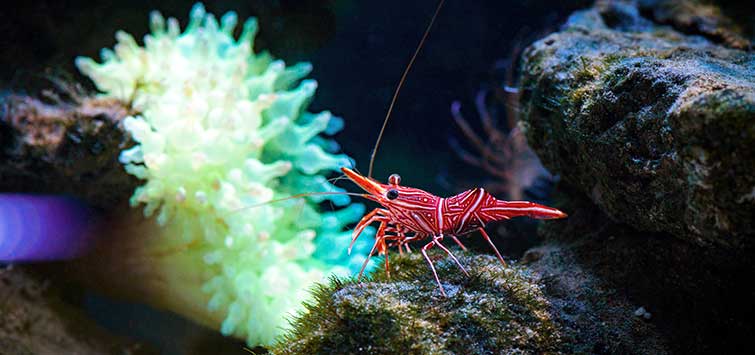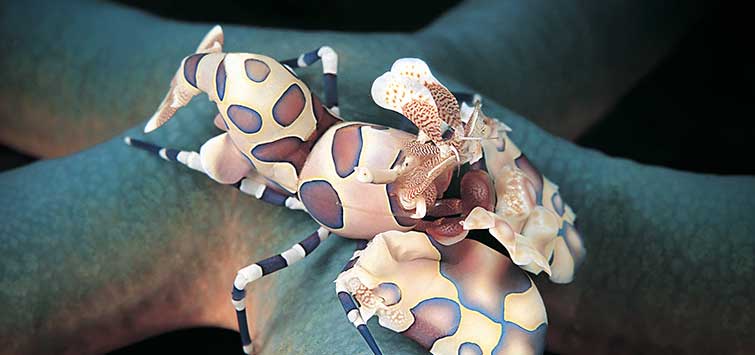Rhynchocinetes durbanensis
Common Names: Dancing shrimp, camelback shrimp, hingebeak shrimp
Phylum: Arthropoda
Class: Malacostraca
Order: Decapoda
Family: Rhynchocinetidae
Range: Southeast Africa to central Indo-Pacific Ocean
Natural Environment: These large-eyed, nocturnal, 1½- to 2-inch shrimp inhabit shallow, rocky inshore areas and are often found in caves, under overhangs, and in crevices and holes in coastal reef structures.
Water Requirements: Calcium 380 to 430 mg/l, alkalinity 2.5 to 3.5 meq/l, pH 8.1 to 8.2, specific gravity 1.024 to 1.026, Mg approx. 1300 mg/l at an SG of 1.025 to 1.026, and a temperature range of 68° to 79°F (20° to 26°C).
Captive Care
First and foremost, this is a poor choice for the reef aquarium, as it will feed upon coral polyps besides scavenging for other available foods. If you insist on keeping it in a reef aquarium, shrimp pellets dropped in the camelback’s vicinity just prior to the system lamps shutting down for the day will serve as a hedge against that behavior—especially if its favorite, Zoanthus polyps, are in the tank. Food needs to be offered at night because this species seeks out hiding places and is rarely seen during daylight hours. If kept in a non-reef tank, other meaty foods, such as frozen brine or mysis shrimp, fish flesh, and commercial dry foods can be offered. This species is best maintained in small groups of three to five individuals.
Acclimation
Keep in mind that all shrimp should be slowly acclimated to their new surroundings, as they have a tendency to go into shock when entering an aquarium where water parameters are slightly different from the shipping container. Temperature, and especially specific gravity, should be the same before transferring them to their permanent home. Contrary to what you may have heard, shrimp of any kind should never be given a freshwater bath to kill parasites prior to being added to the aquarium. It will kill them, as they are very sensitive to changes in osmotic pressure.
Molting
As with all shrimp, low alkalinity, calcium, iodine, and especially low magnesium levels can interfere with the molting process—the shedding of its exoskeleton, a shell-like exterior—which is a normal but extremely important growth aspect for all shrimp. To grow larger, shrimp must shed this exoskeleton because it will not stretch.
The outer exoskeleton begins to dissolve, separating from the body tissue once the exoskeleton underneath it is finished. After the shrimp is ready, it climbs out of its old exoskeleton. The new one is soft and wrinkly, so the shrimp immediately takes up water to smooth it out and increase its size. The shrimp also takes up available minerals such as calcium and iodine, which it uses to harden the new exoskeleton in a process that can take several days to complete.
Keep in mind that they are defenseless at molting time, so they need secure hiding places that predators cannot reach. Additionally, magnesium must be maintained at the proper level in relation to the specific gravity or the molting process will not complete.

.png?h=595&iar=0&w=2781&hash=5FD5E69473BCC22199FBFA2FB71B6033)



